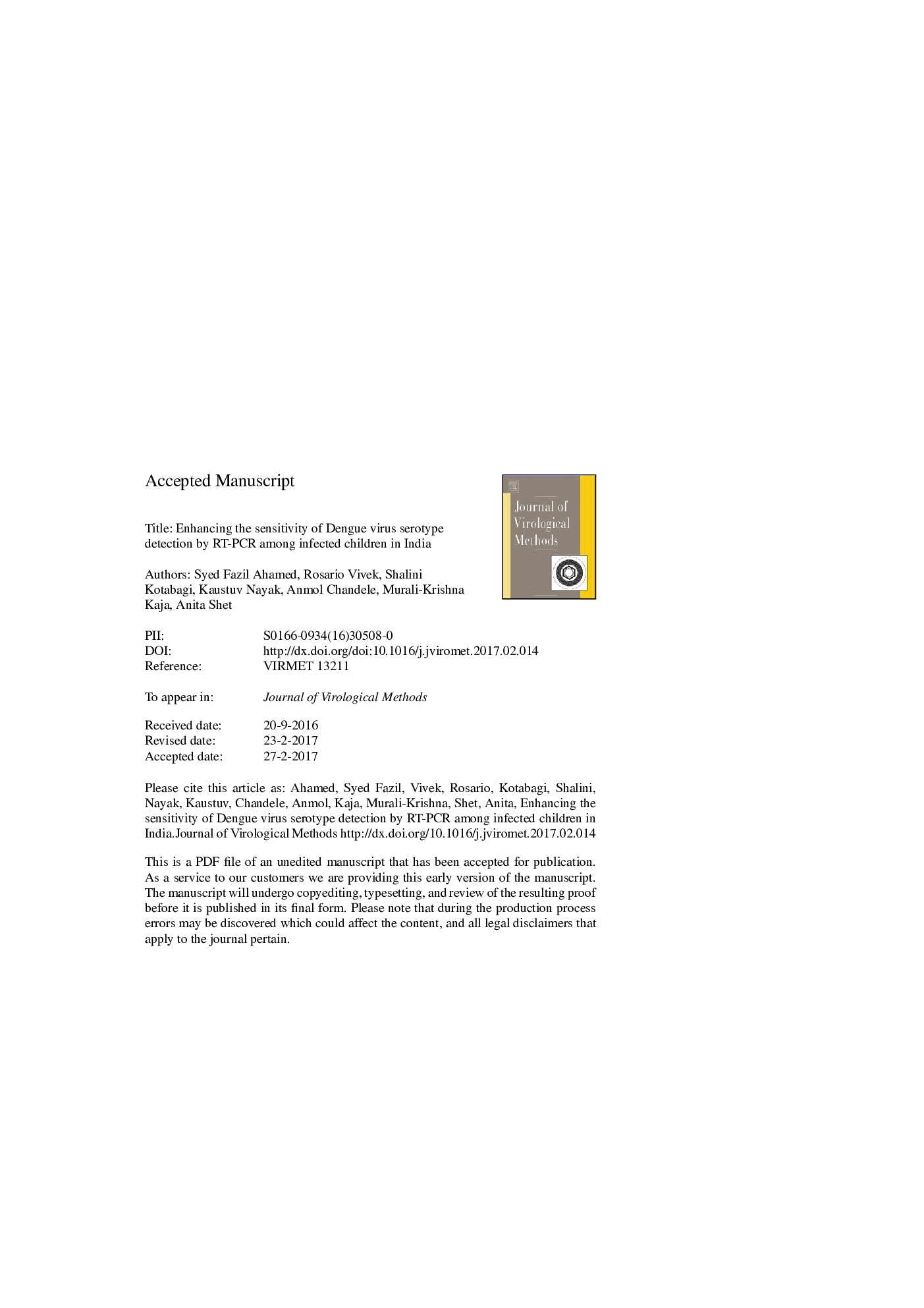| Article ID | Journal | Published Year | Pages | File Type |
|---|---|---|---|---|
| 5672968 | Journal of Virological Methods | 2017 | 28 Pages |
Abstract
Dengue surveillance relies on reverse transcription-polymerase chain reaction (RT-PCR), for confirmation of dengue virus (DENV) serotypes. We compared efficacies of published and modified primer sets targeting envelope (Env) and capsid-premembrane (C-prM) genes for detection of circulating DENV serotypes in southern India. Acute samples from children with clinically-diagnosed dengue were used for RT-PCR testing. All samples were also subjected to dengue serology (NS1 antigen and anti-dengue-IgM/IgG rapid immunochromatographic assay). Nested RT-PCR was performed on viral RNA using three methods targeting 654Â bp C-prM, 511Â bp C-prM and 641Â bp Env regions, respectively. RT-PCR-positive samples were validated by population sequencing. Among 171 children with suspected dengue, 121 were dengue serology-positive and 50 were dengue serology-negative. Among 121 serology-positives, RT-PCR detected 91 (75.2%) by CprM654, 72 (59.5%) by CprM511, and 74 (61.1%) by Env641. Among 50 serology-negatives, 10 (20.0%) were detected by CprM654, 12 (24.0%) by CprM511, and 11 (22.0%) by Env641. Overall detection rate using three methods sequentially was 82.6% (100/121) among serology-positive and 40.0% (20/50) among serology-negative samples; 6.6% (8/120) had co-infection with multiple DENV serotypes. We conclude that detection of acute dengue was enhanced by a modified RT-PCR method targeting the 654Â bp C-prM region, and further improved by using all three methods sequentially.
Keywords
Related Topics
Life Sciences
Immunology and Microbiology
Virology
Authors
Syed Fazil Ahamed, Rosario Vivek, Shalini Kotabagi, Kaustuv Nayak, Anmol Chandele, Murali-Krishna Kaja, Anita Shet,
